
ZEITSCHRIFT DES DEUTSCHEN PALASTINA-VEREINS
Scope & Guideline
Unveiling the Complexities of History and Culture
Introduction
Aims and Scopes
- Archaeological Research:
The journal publishes extensive archaeological findings from excavations, particularly in Israel and surrounding regions, offering insights into past civilizations and their material culture. - Historical Analysis:
It emphasizes historical studies, covering various periods from ancient times to modern history, examining the socio-political changes and their impacts on the region. - Cultural Studies:
The journal includes articles on cultural heritage, traditions, and identities of the peoples of Palestine, exploring how these aspects have evolved over time. - Linguistic and Epigraphic Studies:
Research on ancient languages, inscriptions, and toponymy forms a significant part of the journal, contributing to the understanding of historical linguistics in the region. - Interdisciplinary Approaches:
The journal promotes interdisciplinary research, integrating archaeology, history, religious studies, and anthropology to provide a holistic view of the region's past.
Trending and Emerging
- Interdisciplinary Archaeology:
An increasing number of papers are integrating methods from various disciplines, such as anthropology and environmental science, to provide richer contextual analyses of archaeological sites. - Cultural Heritage and Preservation:
There is a growing emphasis on cultural heritage studies, focusing on the importance of preserving archaeological sites and understanding their roles in contemporary identity politics. - Historical Ecology:
Research examining the relationship between ancient societies and their environments is gaining traction, highlighting sustainability and resource management in historical contexts. - Gender Studies in Ancient Contexts:
An emerging focus on gender roles and representations in ancient societies, particularly in relation to burial practices and social structures, reflects a broader trend in humanities research. - Digital Archaeology and Visualization:
The use of digital tools for archaeological documentation and analysis is becoming increasingly prevalent, illustrating the journal's adaptation to new technologies in research.
Declining or Waning
- Modern Political History:
Discussions on contemporary political issues related to Palestine have decreased, likely due to a shift towards more historical and archaeological studies that provide a long-term perspective on the region. - Regional Studies Outside of Israel/Palestine:
There has been a noticeable reduction in studies focusing on neighboring regions outside of direct archaeological or historical ties to Palestine, indicating a narrowing of geographical scope. - Theoretical Frameworks in Archaeology:
Papers utilizing complex theoretical frameworks to interpret archaeological findings have become less common, suggesting a preference for more straightforward, evidence-based reporting.
Similar Journals

OLBA
Cultivating a Community of Archaeological InquiryOLBA is a distinguished journal in the field of archaeology, published by Mersin University Publications Research Center Cilician Archaeology in Turkey. With an ISSN of 1301-7667, this academic journal has been a platform for scholarly discourse from 2009 to 2014 and again from 2016 to 2019, with a recent volume published in 2022. Although it is currently categorized in the fourth quartile (Q4) for both Arts and Humanities and Social Sciences within archaeology, OLBA continues to contribute significantly to the global archaeology community. It serves as an essential resource for researchers, professionals, and students interested in the diverse aspects of archaeological studies and cultural heritage. Despite not being an open-access journal, OLBA strives to disseminate knowledge effectively, aiding in the exploration of ancient civilizations and the rich tapestry of human history. Its Scopus rankings, placing it in the bottom percentiles, demonstrate the ongoing need for the community to support and engage with the journal to enhance its visibility and impact in the archaeological domain.

Yorkshire Archaeological Journal
Connecting the Dots of Yorkshire's Archaeological HistoryYorkshire Archaeological Journal, published by Routledge Journals, Taylor & Francis Ltd, stands as a pivotal resource in the field of archaeology, particularly focused on the rich heritage and archaeological research within the Yorkshire region of the United Kingdom. With a dedicated ISSN of 0084-4276 and an E-ISSN of 2045-0664, this journal provides both researchers and practitioners valuable insights into archaeological discoveries, methodologies, and theoretical frameworks. While it holds a Q3 ranking in both Archaeology (Arts and Humanities) and Archaeology (Social Sciences), its contributions remain significant for advancing discussions and knowledge within the discipline. The journal's archival depth, converging from as early as 1980 and continuing robustly into 2024, showcases a commitment to fostering academic discourse and exploration of archaeological heritage. Although it does not currently offer open access, its rigorous peer-reviewed articles make it an essential reference for academics, professionals, and students alike who are eager to deepen their understanding of archaeology and its applications.
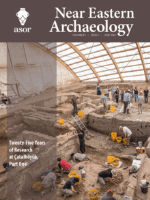
NEAR EASTERN ARCHAEOLOGY
Connecting Scholars to the Heart of Archaeological ResearchNEAR EASTERN ARCHAEOLOGY, published by University of Chicago Press, is a premier journal dedicated to the field of archaeology, particularly focusing on the rich cultural heritage and archaeological findings of the Near East. With an ISSN of 1094-2076 and an E-ISSN of 2325-5404, this esteemed publication provides a vital platform for scholars and practitioners to share their research, insights, and discoveries. The journal holds an impressive ranking in the Q1 quartile for both Archaeology and History in 2023, reflecting its significant impact within these fields and a robust history of scholarly contribution. The journal has been pivotal in shaping discussions around archaeological methodology, theory, and contemporary issues from 2002 to 2024, as it continues to reach a wide audience through various access options. With Scopus rankings placing it in the top percentiles for both History and Archaeology, NEAR EASTERN ARCHAEOLOGY represents an essential resource for researchers, professionals, and students alike, fostering the exploration and understanding of the region's archaeological narrative.
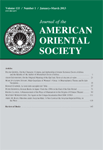
JOURNAL OF THE AMERICAN ORIENTAL SOCIETY
Unveiling Historical Narratives, One Article at a TimeThe JOURNAL OF THE AMERICAN ORIENTAL SOCIETY, published by the American Oriental Society, is a prestigious academic journal based in the United States that serves as a vital resource for researchers and scholars engaged in the fields of Asiatic studies, cultural studies, and broader humanities. Established to foster scholarly communication, this journal presents rigorous peer-reviewed articles and critical analyses that explore the diverse cultural, historical, and linguistic dimensions of the Orient. With an impact factor reflecting its scholarly significance, it occupies a Q3 position in Arts and Humanities (miscellaneous) and a Q2 ranking in Cultural Studies as of 2023. Although it does not currently offer open access, the journal maintains a strong reputation for its scholarly contributions, making it an essential platform for disseminating research findings. By bridging gaps in knowledge and fostering interdisciplinary dialogue, the JOURNAL OF THE AMERICAN ORIENTAL SOCIETY remains a cornerstone for those committed to the exploration of Asian cultural heritage and philosophy, enriching the academic community's understanding in these vital fields.

Conimbriga-Revista de Arqueologia
Discovering History: Open Access to Archaeological InsightsConimbriga-Revista de Arqueologia is a distinguished open-access journal dedicated to the field of archaeology, published by COIMBRA UNIVERSITY PRESS. Since its inception, the journal has fostered a vibrant intellectual community focused on the exploration and dissemination of archaeological research, particularly emphasizing studies relevant to the rich historical and cultural heritage of Portugal and beyond. With its open access model established in 2014, it has become a vital resource for researchers, professionals, and students to share their findings without access barriers, encouraging collaboration and knowledge exchange. Despite the absence of specific metrics such as the HIndex and Scopus rankings, the journal is recognized for its commitment to high-quality scholarship and its role in advancing archaeological discourse. Positioned within the scholarly landscape, Conimbriga-Revista de Arqueologia serves as a crucial platform for the publication of innovative research, reviews, and critical essays, making it an essential journal for those invested in the archaeological sciences.
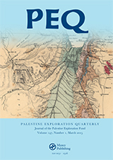
Palestine Exploration Quarterly
Unearthing the Past, Shaping the Future of PalestinePalestine Exploration Quarterly, published by Routledge Journals, Taylor & Francis Ltd, is a leading academic journal that has been at the forefront of archaeological, historical, and cultural studies concerning Palestine since its inception in 1865. With an impressive Q1 ranking in multiple categories including Archaeology, History, Religious Studies, and Visual Arts and Performing Arts, the journal is recognized for its rigorous peer-reviewed content that significantly contributes to the understanding of cultural heritage and societal dynamics in the region. The UK-based journal offers an array of scholarly articles, reviews, and reports aimed at researchers, professionals, and students in the humanities and social sciences. With a strong focus on advancing knowledge and fostering academic discourse, the Palestine Exploration Quarterly remains an invaluable resource for those engaged in the exploration and interpretation of Palestine's rich history and heritage, now accessible through various academic libraries worldwide.
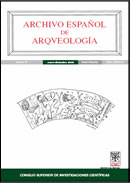
Archivo Espanol de Arqueologia
Exploring the depths of history, one discovery at a time.Archivo Español de Arqueología is a prestigious journal published by the Consejo Superior de Investigaciones Científicas (CSIC), dedicated to the field of archaeology and the historical sciences. Since its transition to Open Access in 1991, this journal has been a significant resource for scholars and practitioners in Spain and beyond, ensuring the dissemination of high-quality research to a broad audience. With an impressive Scopus ranking that places it within the top 20% of journals in the disciplines of History and Archaeology, Archivo Español de Arqueología plays a crucial role in advancing academic discourse and promoting innovative archaeological methodologies. The journal has maintained rigorous standards, reflected in its placement within the Q2 and Q3 quartiles, enabling it to establish a reputation for excellence and reliability in archaeological scholarship. Researchers, professionals, and students are encouraged to explore the journal's diverse array of articles from its foundation year of 2009 to the present, enriching their understanding of the past through the latest findings and theoretical advancements in archaeology.
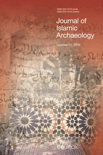
Journal of Islamic Archaeology
Advancing Knowledge in Islamic ArchaeologyJournal of Islamic Archaeology is a distinguished publication dedicated to advancing the field of archaeology through the lens of Islamic heritage and culture. Published by EQUINOX PUBLISHING LTD, this journal provides a platform for researchers, professionals, and students to disseminate their findings and engage in critical dialogue regarding the archaeological aspects of Islamic societies from 2014 to the present. With an ISSN of 2051-9710 and E-ISSN 2051-9729, the journal is indexed within significant academic databases and positioned notably in the Q3 and Q2 quartiles for archaeology in the Arts and Humanities and Social Sciences categories, respectively. The journal fosters scholarly exchange and innovation, drawing attention to the rich tapestry of Islamic archaeology, and securing its role as an essential resource for practitioners and academics alike. Its commitment to rigorous peer-review and high-quality contributions ensures a valuable repository of knowledge, enhancing the understanding of an often underrepresented field in archaeology.
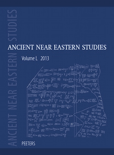
Ancient Near Eastern Studies
Illuminating the Past through Diverse Academic LensesAncient Near Eastern Studies, published by PEETERS in Belgium, is a distinguished journal dedicated to the exploration and scholarship of the rich cultural and historical tapestry of the ancient Near East. With a focus on interdisciplinary research, this journal invites contributions across various fields including Archeology, History, Classics, Literature and Literary Theory, and Visual Arts and Performing Arts. As evidenced by its robust performance in the 2023 category quartiles, ranking Q1 in Classics and Q2 in History, this journal is recognized for its academic rigor and relevance, making it an integral platform for researchers, professionals, and students alike. Although currently not open access, it provides indispensable insights into research trends and theoretical frameworks that advance our understanding of ancient civilizations. With its ISSN 1378-4641 and E-ISSN 1783-1326, Ancient Near Eastern Studies continues to foster scholarly communication and engagement in this vital area of human history.

Spal
Fostering Dialogue in the Study of Antiquity.Spal is a distinguished academic journal dedicated to the fields of Archaeology and History, published by the University of Seville, Editorial. With an ISSN of 1133-4525 and an E-ISSN of 2255-3924, it has established a prominent reputation within the scholarly community, currently enjoying an impressive Q1 ranking in Archeology (Arts and Humanities) and History, alongside a Q2 ranking in Archeology for 2023. The journal serves as a critical platform for researchers, professionals, and students alike, promoting the dissemination of cutting-edge research and innovative methodologies in these vital disciplines. Spal's Scopus Ranks place it in the 84th percentile for Arts and Humanities - History and the 72nd for Archeology within the field, emphasizing its impact and relevance in contemporary scholarship. Although it operates under a traditional access model, its commitment to advancing knowledge and discourse in archaeological and historical studies remains unwavering. The journal's coverage spans from 2015 to 2024, positioning it well to contribute to ongoing academic conversations and foster collaborations within the global research community.